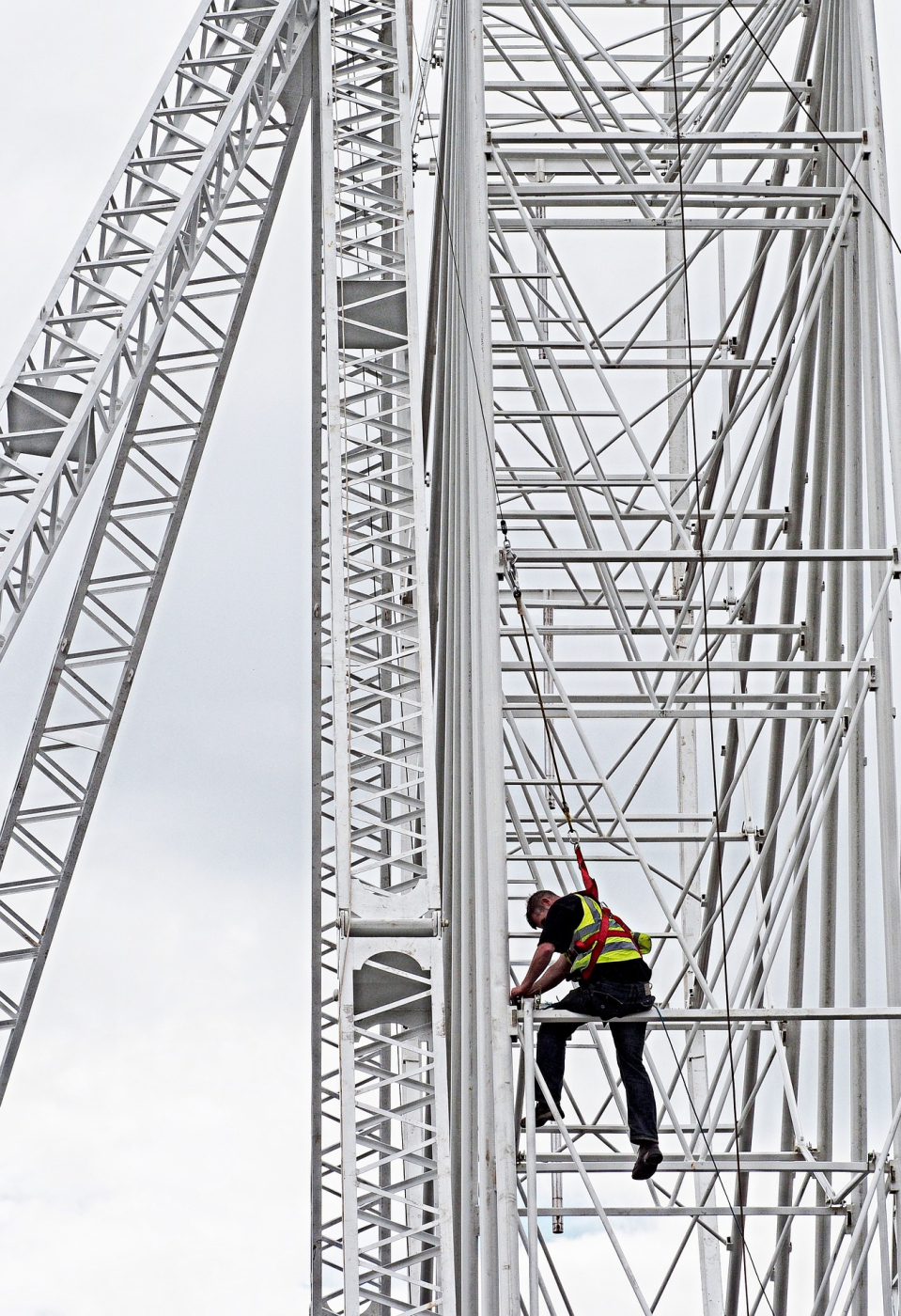Dr Richard Brown provides his thoughts about a recent situation with a Christmas tree and its lack of decorations due to a work at height concern.
I read last week with a heavy heart that Calderdale Council had decorated only the bottom half of their wonderful naturally growing tree. As an expert witness providing work at height opinions in criminal matters, I am well used to being involved in work at height matters, where the risks have not been properly assessed and serious injury and fatal injury occur. However, it pains me when I read such stories of local authorities taking the easy option and in a way that appears to blame sensible regulations for their inaction.
A spokesperson for Calderdale Council as reported by the BBC[1] stated that it was not “safe or accessible to decorate the highest sections” of the tree. Due to “safety and accessibility” issues, the decorations were “spread amongst the lower branches”.
I am unsure if the true reason is a cost over enjoyment approach, or simply a misunderstanding of how work at height can be undertaken safely. I googled a local access equipment hire company after reading the article and found the following prices quoted:
- £60 for the 19 metre vertical reach mobile elevated work platform, with the capacity to extend horizontally by 7.5 metres.
- £40 per hour each subsequent hour
- Further discounts to the above for ½ and full day hire
The prices quoted above include the elevated platform and a driver. A few hours of hire would seem to me to be enough time to put the lights and decorations on the uppermost parts of the tree. A mobile elevated work platform would be the perfect way to access the tree safely, cost-effectively and provide the local people with the joy that they could really do with, particularly in light of recent COVID 19 news.
The Work at Height Regulations 2005[2] provides a sensible approach to managing risks at height. The first rule is to avoid working at height if possible – the council has clearly done this, but this is not what the regulations are designed to achieve. An example of eliminating the work at height is seen on every high street, where window cleaners now use pumped water systems and long poles so that they stay on the ground safely.
The next stage if the hazards related to height can’t be eliminated is to use an existing workplace (e.g. parapet wall) – clearly not possible when discussing a large Christmas tree!
The next rule in the risk control hierarchy is to provide collective protection such as scaffolding or a mobile elevated work platform. Scaffolding would be required to be built to the top of the tree and around the whole tree – the cost would be high and a disproportionate spend.
The sensible, cost-effective, safe and proportionate risk control is a mobile elevated work platform. The prices quoted were for a long reach machine, with a trained operator. I see all too often cases where work at height goes disastrously wrong, resulting in permanent disability and death. Planning the work, using competent staff or contractors, means that work at height can be done safely and still promote a happy Christmas for the people of Bailiff Bridge.
Dr Richard Brown is the head of the expert witness sector at Finch Consulting, and a practising expert witness and consultant. Richard spent most of his working life as an H&S practitioner in heavy manufacturing, power generation, construction, and logistics. He provides expert evidence in work at height cases, workplace transport and on the CDM Regulations in criminal matters, whilst providing safety management expertise to international engineering and construction arbitration and civil claims.
He holds a PhD in safety culture and behaviours, an MSc in HSE management and a Post Graduate Diploma in process engineering and risk management. Richard is a chartered safety practitioner and chartered building engineer.
To contact Richard, please email [email protected].
[1] https://www.bbc.co.uk/news/uk-england-leeds-59579541
[2] https://www.legislation.gov.uk/uksi/2005/735/contents/made





